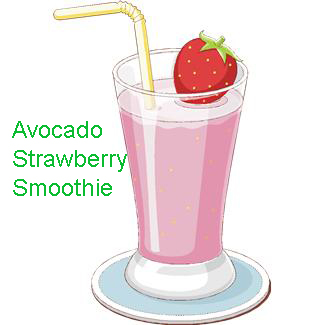The Avocado Story And Fat Can Be Good
The Avocado Story And Fat Can Be Good (Issue 11)
by Anahad O’Connor and Dave Lieberman
(Anahad) Most of us have been programmed for years to think that cutting back on fat in every shape and form is the shortest path to better health. But the science could not be any clearer. Focus on the right kind of fat, and you’re likely to lose weight, protect your ticker, and lower your risk of all sorts of diseases. Scientists have known this is the case since at least the 1940s, when out of the devastation of World War II came one of the most crucial nutritional discoveries of the last century.
The setting was post-war Europe, southern Greece. In 1947, the Rockefeller Foundation sent researchers and humanitarian aid workers to the palm-dappled island of Crete, a land steeped in ancient history. Previously a paradise, the island had been left in near ruins after a brutal invasion and occupation by German and Italian forces. When the Rockefeller researchers arrived, they were sure they’d find rampant malnutrition. Compared to Americans, the Cretans ate like peasants. Wartime dinner tables were bereft of dairy, and protein was scarce. Instead the locals ate mostly bread, nuts, legumes, some fruits and vegetables and ample amounts of fat, some from fish and animals and a lot of it from olive oil.
But the diseases that the researchers were sure they’d find among the Cretans were nonexistent. Cardiovascular disease, cancer and other ills were almost unheard of, and life expectancy was high.
That was in stark contrast to what scientists found when they examined six other countries, especially one much further north, Finland. Physically, the Finns could not have been more different from the people of Crete. They were loggers and farmers, standing tall, strong, and rugged. Malnutrition was not a concern. Like the Cretans, the Finns ate plenty of fat, most of it from meat, milk, and their national condiment, butter. They also had cholesterol levels that were similar to what was seen in Crete. But unlike the Cretans, the Finns had extraordinary rates of heart disease, the highest in the world. Sharp chest pains were as much a part of reaching midlife in Finland as a fiftieth birthday, except that the chest pains came first. Many Finnish children knew their grandparents only from pictures.
Some researchers thought the difference was genetics, or perhaps Crete’s balmy climate. But that theory was quickly disputed. Cretans who migrated to other countries, including tropical ones like Brazil, suffered the same rates of heart disease and cancer as their new countrymen. Speculation soon turned to tobacco. The Finns were known to like their cigarettes. But later studies showed that even in rural areas of Crete where the locals smoked frequently, drank heavily, and had other coronary risk factors, cardiovascular disease was low. Like a Doberman standing sentry over its turf, something in the Cretan diet was fiercely cardio-protective.
We know from more recent studies that the Finns were torturing themselves with the principal fat in their diet, saturated fat, while their Cretan counterparts were reaping huge rewards from the type of fat they were eating, monounsaturated fat.
The benefits of monounsaturated fat cannot be overstated. The medical literature on what it can do for you is enormous. It lowers bad cholesterol, raises the good kind, reduces inflammation, and prevents heart disease. Compared with the artery-gumming effects of saturated fat, it acts like arterial drain cleaner, keeping blood vessels clear and reducing harmful deposits. That’s the kind of fat anyone could love.
Balance may be a good thing, but experts say that when it comes to your fat intake, you definitely want the scales to tip heavily in favor of monounsaturated fat. Ask most people where they can find them, however, and beyond a mention of olive or canola oil, you’re almost guaranteed a blank stare. So consider yourself a Rockefeller scientist, on the verge of another great discovery. One of nature’s most abundant and perhaps surprising sources of monounsaturated gold is a food that plays almost no role in the average person’s diet: avocados. If the only time you eat them is in guacamole on Super Bowl Sunday, you’re making a huge mistake, like limiting green veggies to St. Paddy’s Day.
It’s time to make some room in your culinary repertoire.
Ounce for ounce, avocados have more fat than virtually any other fruit, which is why most people typically avoid them, busting them out in the kitchen only a couple times a year for football or Cinco de Mayo.
Avocados collect dust on supermarket shelves the rest of the year, making only brief appearances in California rolls and burritos, as we fill our plates with foods that are nutritionally inferior.
Avocados may be high in fat, but the bulk of it is monounsaturated; and, like all plant foods, they contain no cholesterol. In fact, with their extremely high levels of fiber, about 30 percent of the recommended daily amount in a single cup (the most of any fruit); they actually work to lower your cholesterol.
But it gets better. Half an avocado has only 150 calories. That’s less than a small tier of [fast food] fries (230 calories), and amazingly, it’s even less than a single serving of most [creamy] salad dressings (170 to 190 calories), which also come loaded with sodium and both trans and saturated fats. Why dump that on a perfectly healthy salad when you can top it off instead with the best fat possible in the form of a few slices of avocado?
If every American made that decision, our health and nutritional landscape would look a lot different. According to a joint report by researchers at the Harvard School of Public Health and Brigham and Women’s Hospital in Boston, as many as a hundred thousand cardiac deaths in the United States could be prevented every year if people replaced the bad fats in their diet, particularly trans fats, with monounsaturated fat and its similarly healthy sidekick, non-hydrogenated polyunsaturated fat.
Then there’s potassium, the blood-pressure-reducing mineral that bananas are famous for. Bananas are a wonderful food, but avocados contain about 60 % more potassium. Like carrots in a candy store, avocados rarely get their due.
Consider avocados something of a culinary triple threat: tasty, versatile, and an excellent stand-in for other fats. As a health reporter who’s been through the studies and examined the science, I was sold a long time ago. But for all my good intentions, every time I experimented with avocados I would find myself right back in the same place: looking for … chips.
I just couldn’t seem to break out of the guacamole rut.
So I turned to Dave, who had dabbled only occasionally with avocados but quickly came around when he discovered their nutritional profile. In fact, he said, he had wanted to put them to good use all along.
(Dave) When I lived in Los Angeles, I thought I had entered an avocado Nirvana, because I had a big, beautiful avocado tree growing right on my deck. It was heavy with fat, green avocados. But I wasn’t the only one who had designs on them. Like clockwork, every time the avocados were ready to pick, I’d walk out onto the deck to find that every last one of them was gone, save for a few sad casualties left on the porch that were riddled with little tooth marks. That’s when I discovered I had squirrels. So much for my avocado heaven! That is, until now. Anahad finally gave me another good reason to dream up a bunch of ways to use avocado.
 I’ve always loved avocados, but it wasn’t until I finally got around to experimenting with them that I realized just how truly versatile they are. Like most Americans, I’ve been pretty narrow in my avocado repertoire, sticking to salads, sandwiches, and dips. But …there’s a wide range of uses for avocado, from serving it hot in stews and soups to making it the starting point for delicious smoothies and desserts.
I’ve always loved avocados, but it wasn’t until I finally got around to experimenting with them that I realized just how truly versatile they are. Like most Americans, I’ve been pretty narrow in my avocado repertoire, sticking to salads, sandwiches, and dips. But …there’s a wide range of uses for avocado, from serving it hot in stews and soups to making it the starting point for delicious smoothies and desserts.
Preparing avocado in a sweet way was the most eye-opening part of this exploration for me. But in many parts of the world, particularly in South America and South Asia, enjoying avocado as a dessert with nothing more than some sugar …is de rigueur.
Treating avocado as a luscious dessert makes sense, considering its velvety richness. This heart-healthy fat content and mild flavor is exactly what makes avocado such a versatile ingredient. …With endless uses, avocado has everything you need to make it a staple at lunch, dinner and dessert.
Publisher’s Note:
It always seemed to me that avocados tasted so rich so that we would eat them and get full of good, healthy fat so that we could curb our appetites from the fullness we felt.
FEEDBACK
Please leave your comments below so others can share what you think.
______
ANAHAD O’CONNOR
Anahad has been writing for the Science Section at the New York Times. He is passionate about investigative science and fitness reporting. He is one of our panelists whose full bio you will find in the Experts section. Check our Resources Tab to purchase The 10 Things You Need To Eat.
DAVE LIEBERMAN
Through watching his father cook, Dave started his relationship with food. He went from hosting a campus cooking show at Yale to hosting shows for the Food Network and authoring several books. He works as a personal chef in New York, NY.
Copyright © [2012] by [WarriorsOfWeight.com] – All Rights Reserved.
Click here to subscribe to this newsletter.







